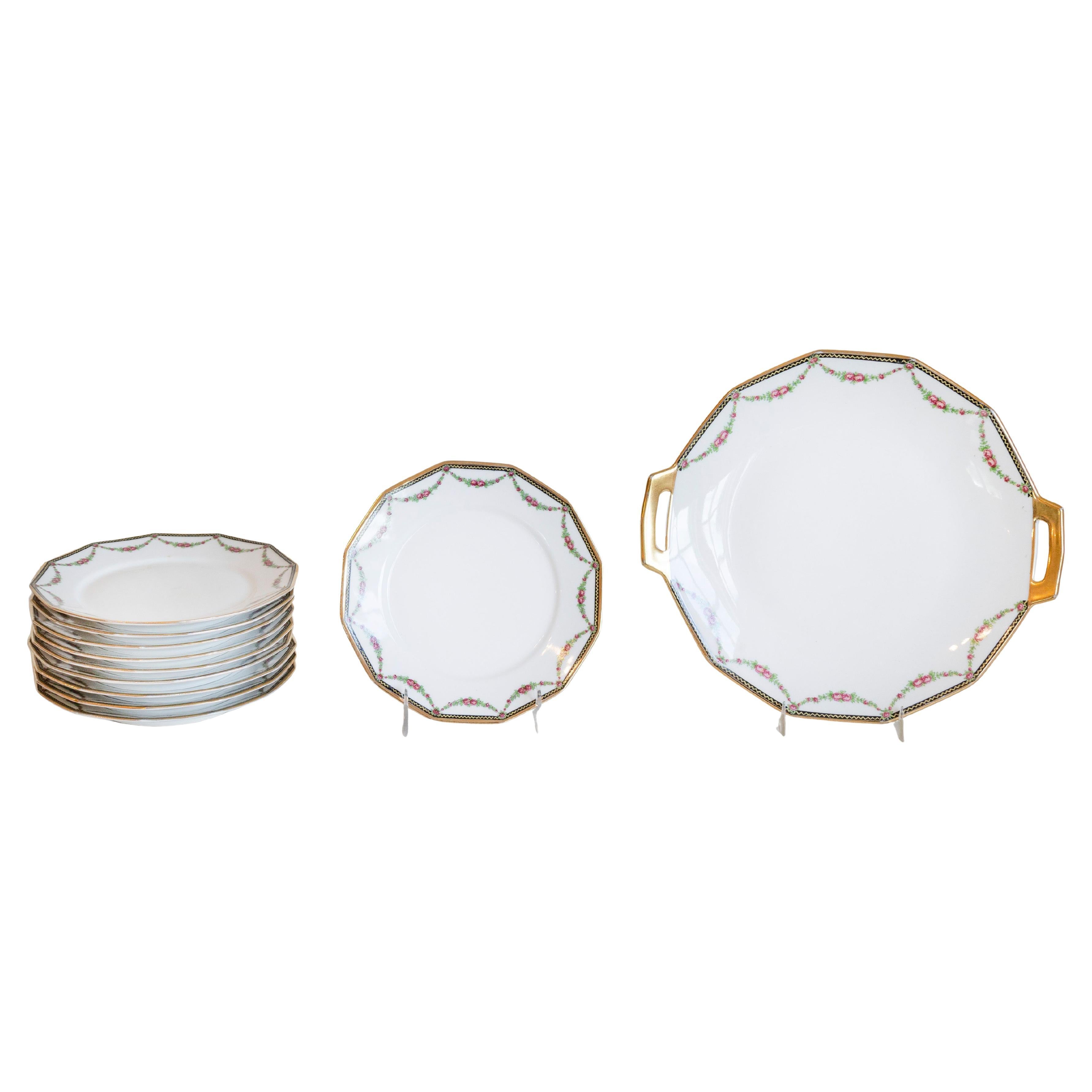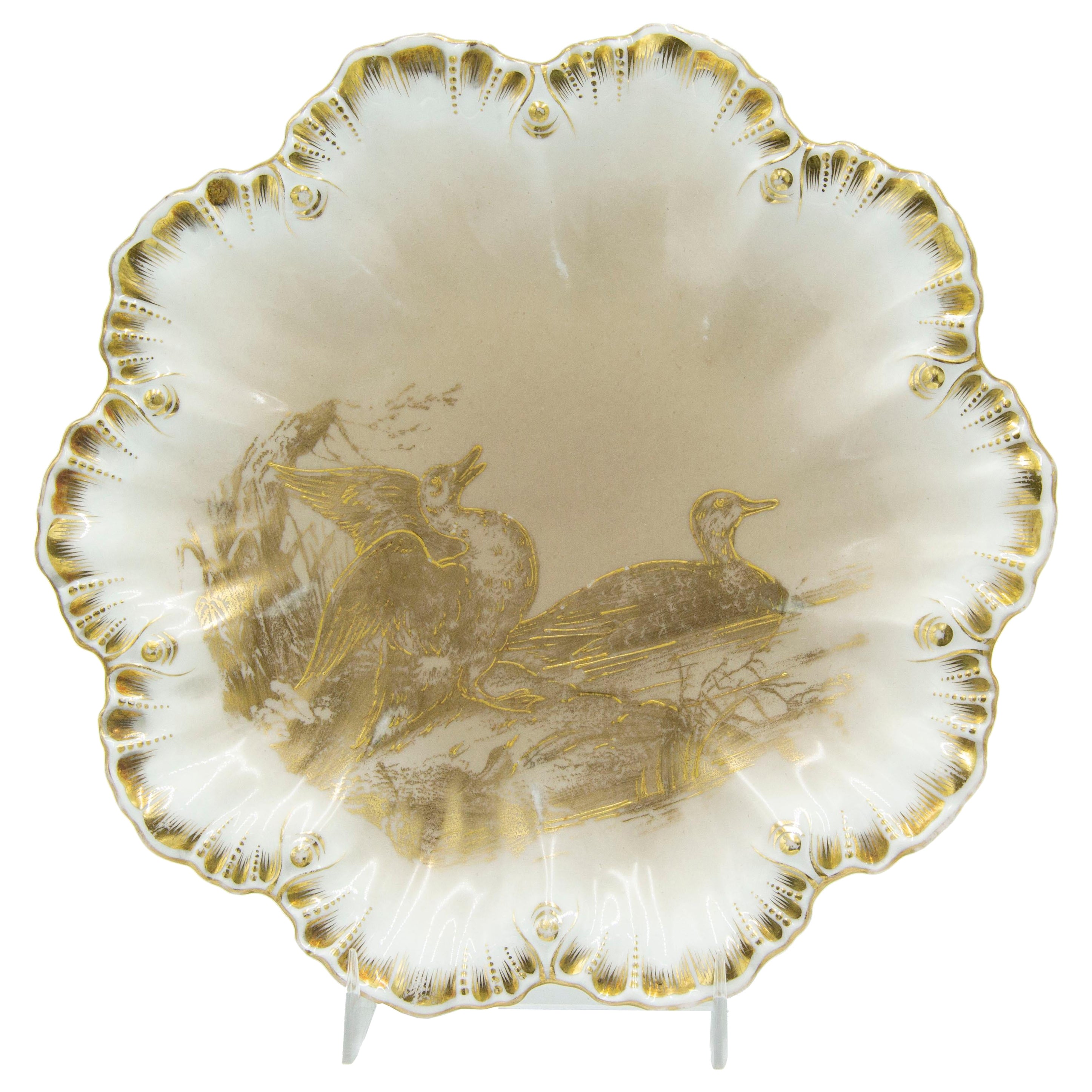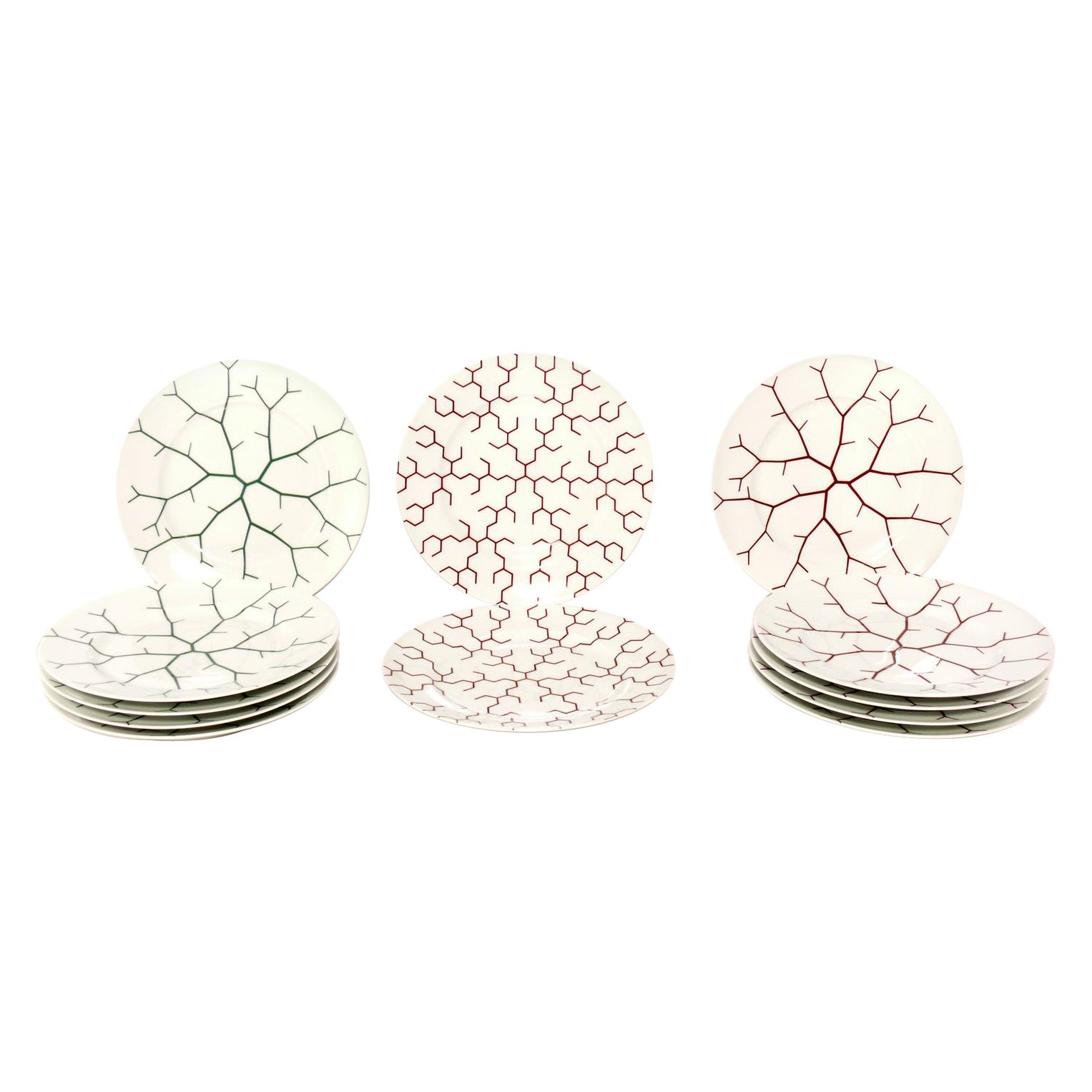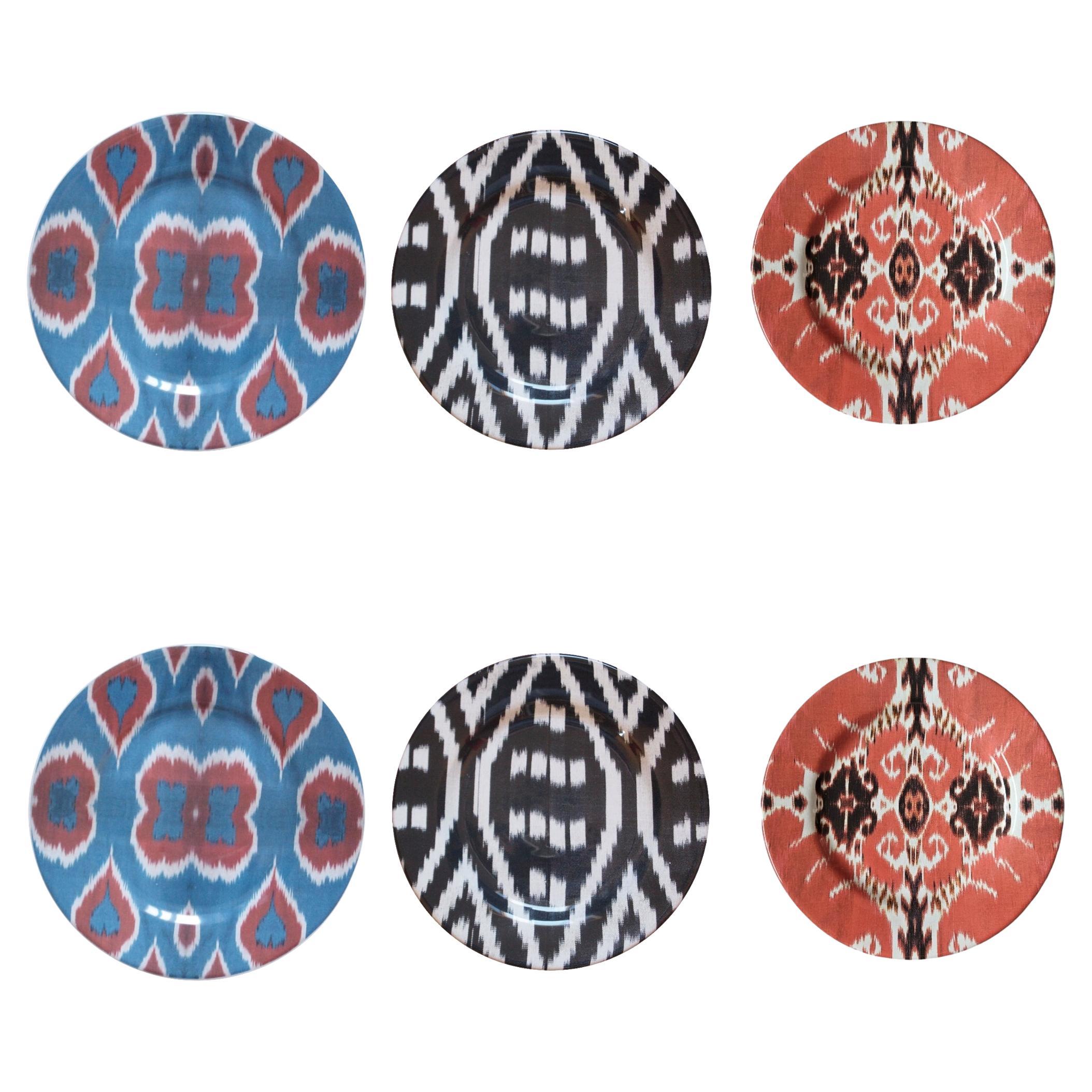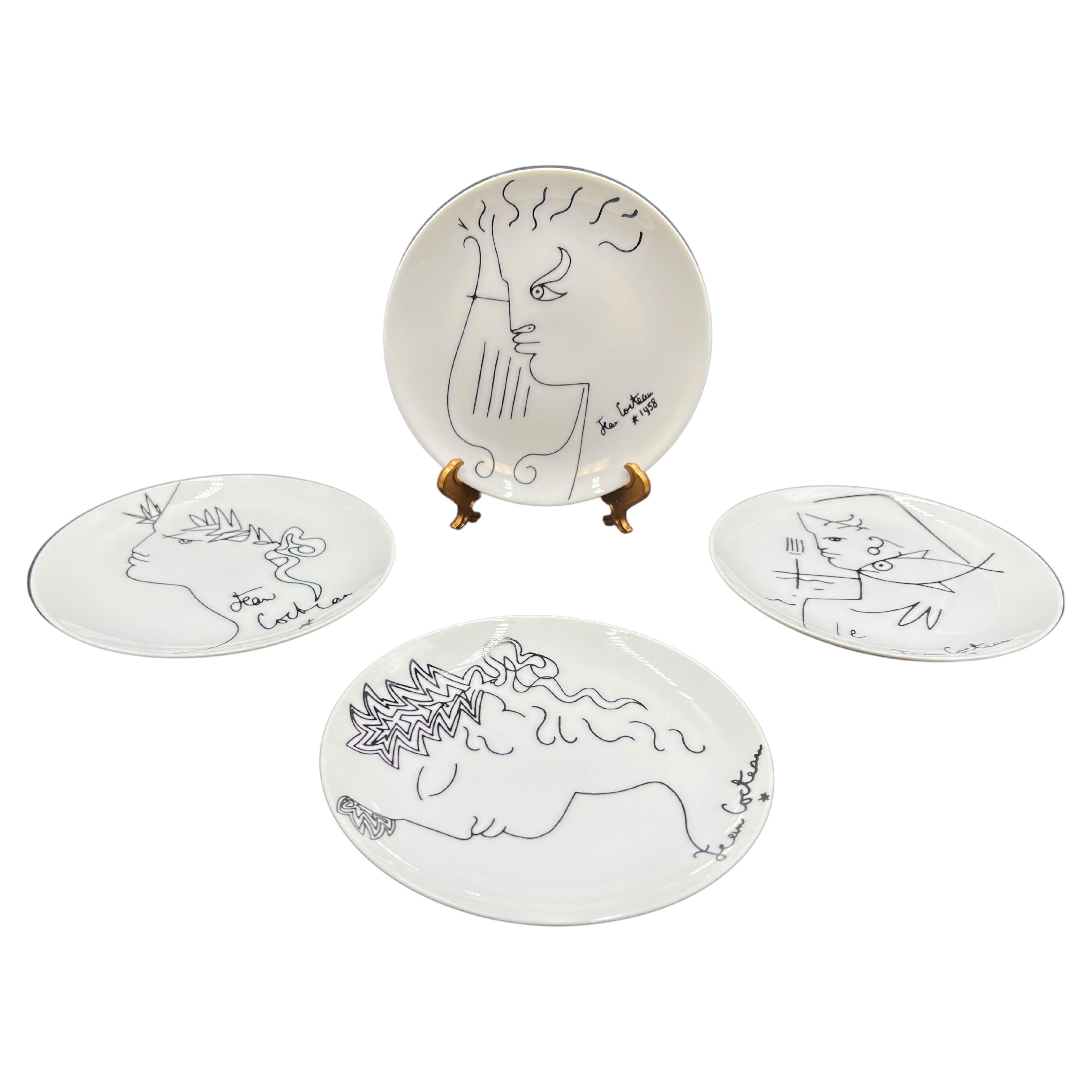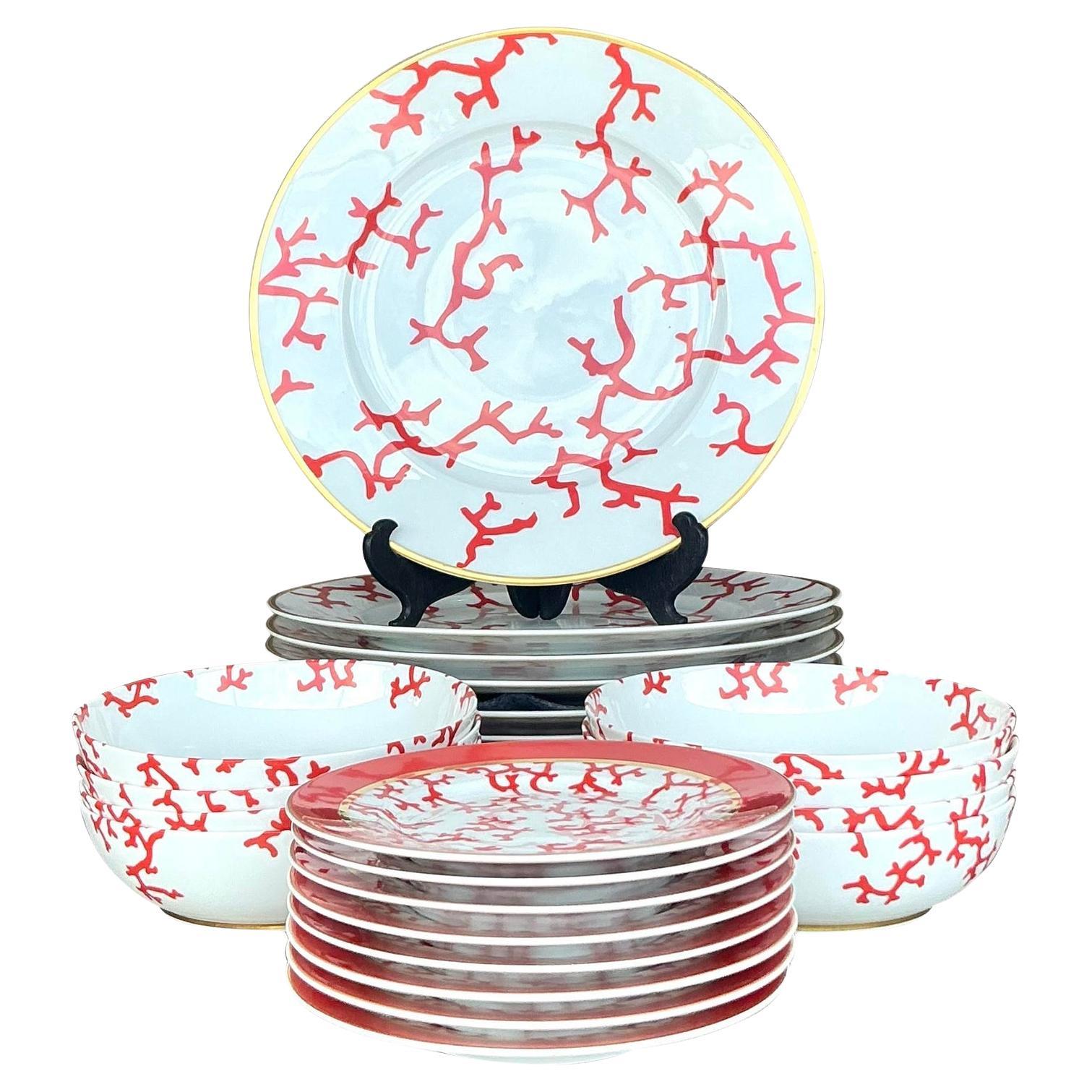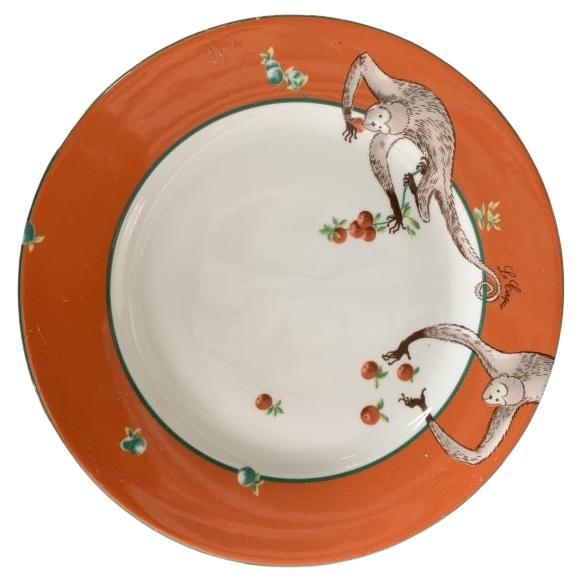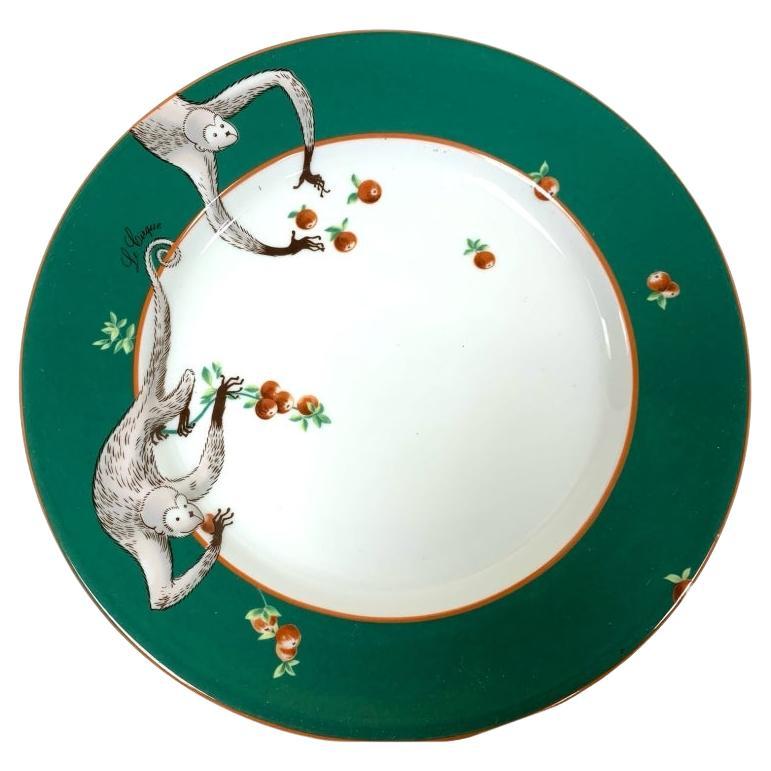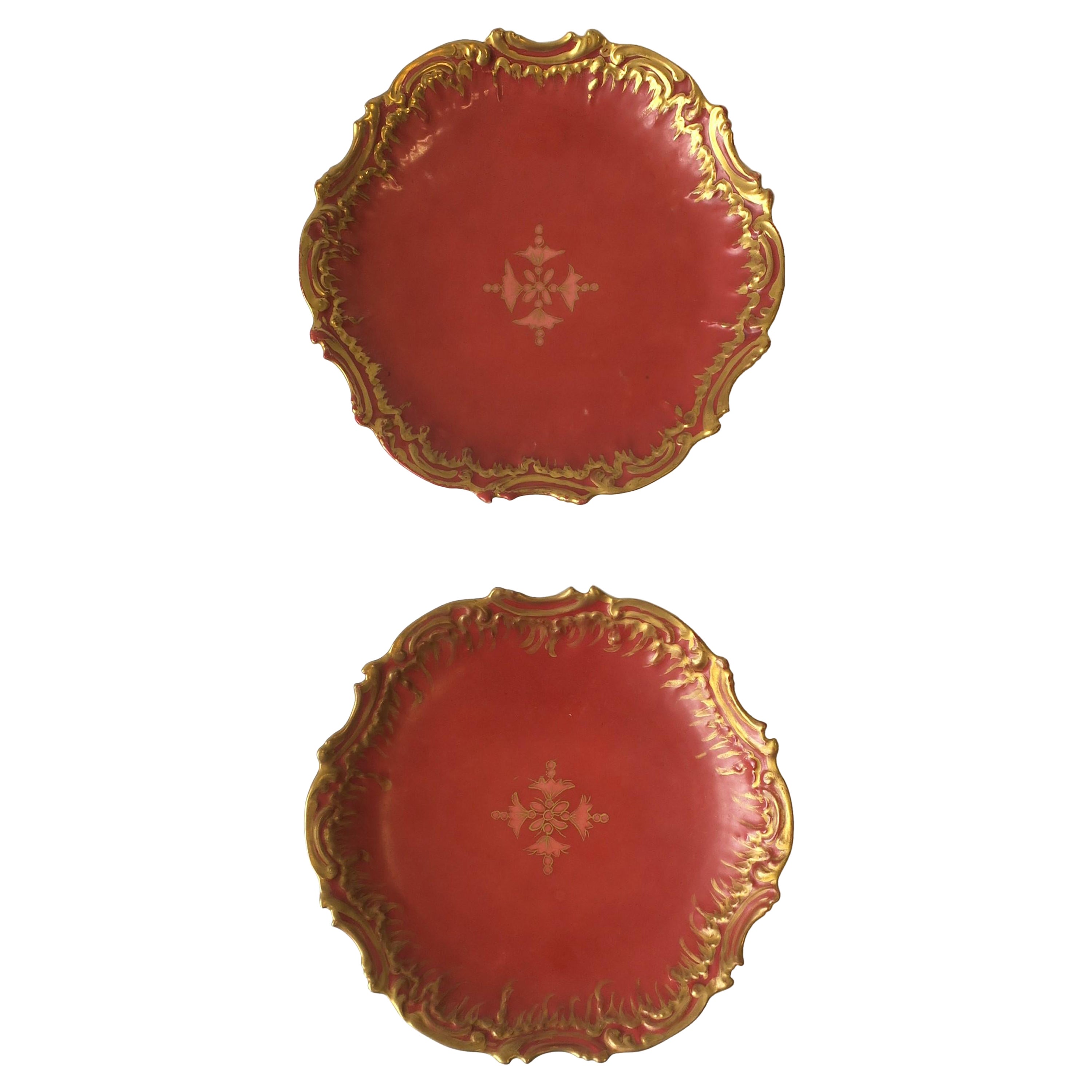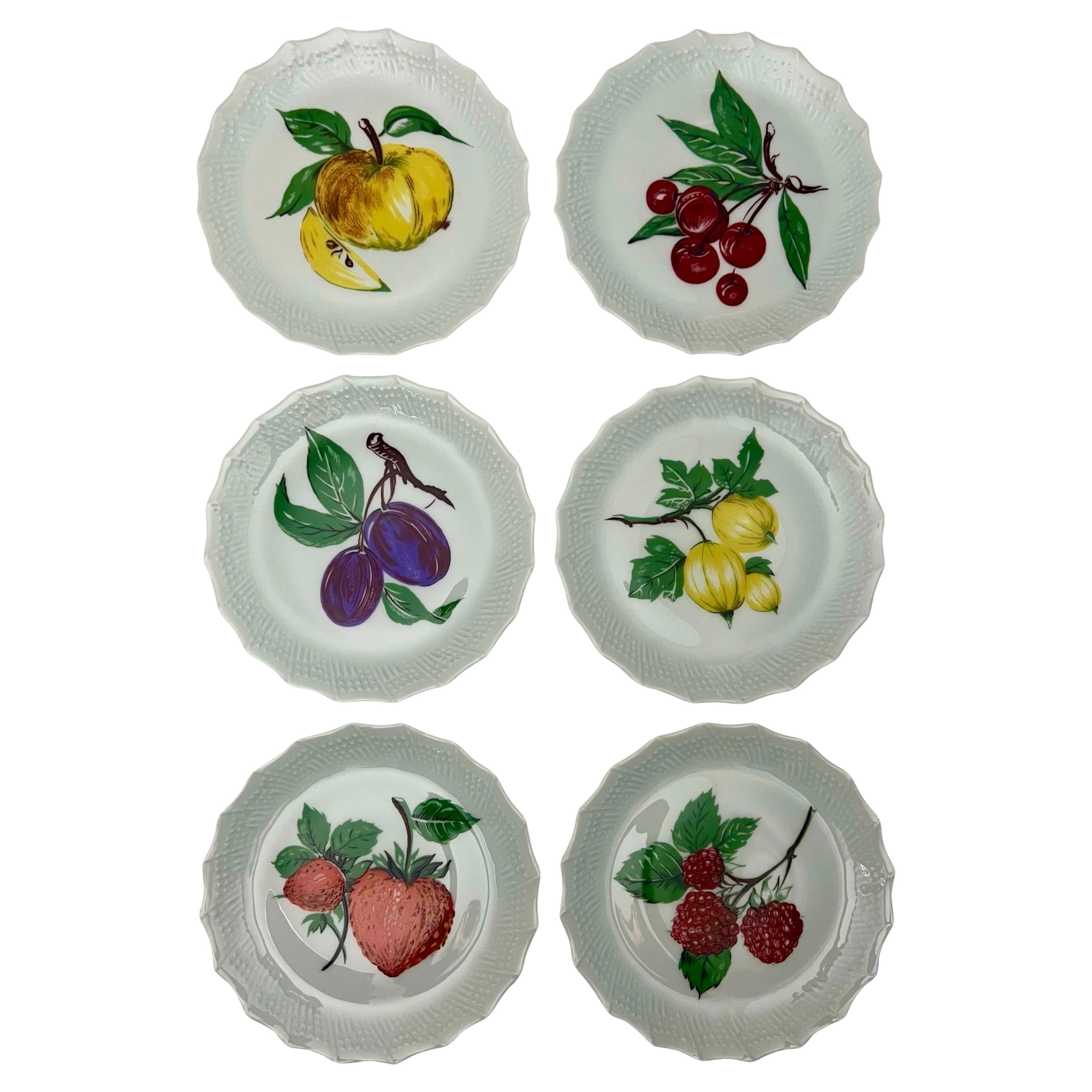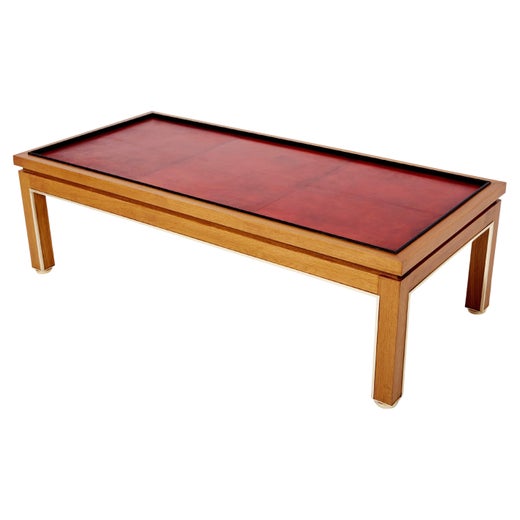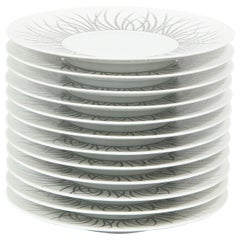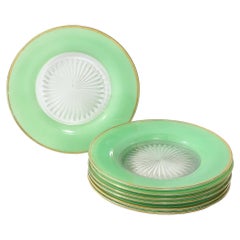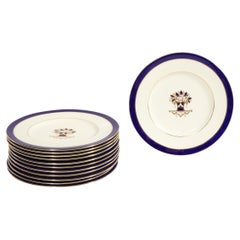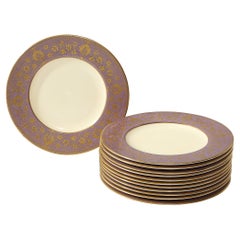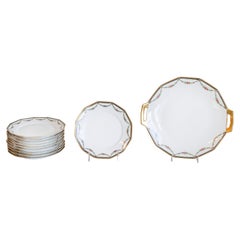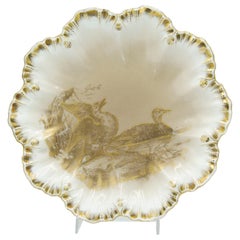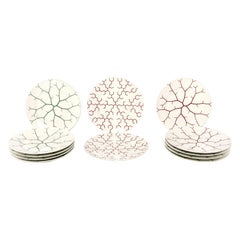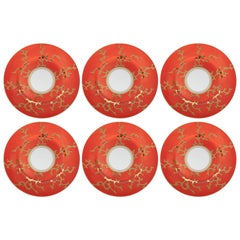
Set of Six Cristobal Dessert or Salad Plates by Alberto Pinto for Limoges
View Similar Items
Set of Six Cristobal Dessert or Salad Plates by Alberto Pinto for Limoges
About the Item
- Creator:Limoges (Maker),Alberto Pinto (Designer)
- Dimensions:Height: 1 in (2.54 cm)Diameter: 9 in (22.86 cm)
- Sold As:Set of 6
- Style:Modern (Of the Period)
- Materials and Techniques:
- Place of Origin:
- Period:
- Date of Manufacture:20th Century
- Condition:
- Seller Location:New York, NY
- Reference Number:1stDibs: LU793410464071
Alberto Pinto
What interior designer Alberto Pinto accomplished during his 41-year career of wild, wondrous creation — the extraordinarily opulent yet restrained decoration of palaces, villas, pieds-à-terre, townhouses, corporate headquarters, yachts, jets and hotels — is more than most of us might ever dream. What’s most remarkable about it all is that he had no professional training, although every aspect of his cosmopolitan life seems to have been a preparation for his adored vocation.
Born in Casablanca to globetrotting Argentine parents of Sephardic Jewish descent, Pinto spent much of his childhood traveling to glamorous and exotic places with them and his younger brother, Charles, and baby sister, Linda, with whom he was extremely close — and who now runs his studio. His love of art, beauty and decorative splendor, especially the rich, complex sort everywhere on view in Morocco, ultimately led him to study art history and world cultures as a young man at the École du Louvre in Paris.
Not surprising for such a budding aesthete, Pinto loved to take pictures. He was also ambitious, and he moved to New York in the 1960s to work as a photographer for Condé Nast. Soon, he was traveling the world shooting fabulous interiors. He was especially inspired by projects he photographed in Mexico by Luis Barragán and in England by David Hicks, and he thought about trying his own hand at interior design while still in his 20s. He was encouraged in this pursuit by his close friend, the celebrated fashion designer Hubert de Givenchy, himself a once precocious talent and a renowned decorative-arts connoisseur.
In 1971, he founded Cabinet Alberto Pinto, housed in a suitably stunning 17th-century hôtel du particulier on Place des Victoires (visiting the headquarters on an initial consultation was all but required by Monsieur Pinto, as his staff still call him). The clients who called on him came to include European aristocrats, Saudi and Qatari princes and numerous financiers and business tycoons from across the globe.
What is striking about all the projects Pinto completed during his extraordinary career is how varied they are in style. All are luxurious, but some verge on swank minimalism, while others are over the top in their “Oriental” opulence. As a Moroccan, Pinto had no issues with that descriptor; in fact, he published a 2004 monograph titled Orientalism, which was devoted to the interiors he’d created worldwide that are richly adorned with exquisite tiling and ornate plaster moldings, vivid stained-glass light fixtures, rich colors and copious amounts of silk and damask.
In addition to his interior decoration firm, he launched a homewares collection, offering limited-edition furniture, tableware, linens and accessories, as well as collaborating on such pieces with luxury manufacturers like Pierre Frey, Raynaud and D. Porthault.
The interiors of Alberto Pinto are glorious works of art. And to judge from the lavish words of love heaped upon him by friends in various printed tributes, who extolled his affectionate warmth and generosity, his life was, too.
Find authentic Alberto Pinto seating, tables and other furniture today on 1stDibs.
Limoges
Limoges porcelain has withstood the test of time for centuries. The widely cherished ceramics named for the French city and commune in which they are made are synonymous with sophistication, elegance and refinement. Today, antique Limoges dinnerware, serveware, decorative objects and other porcelain products are coveted and collected all over the world.
The story of Limoges porcelain, which refers to porcelain made in the Limoges region of France — not by a specific factory — begins in 1768. The region is a rich source of kaolin, feldspar and quartz — vital ingredients to the production of this type of pottery.
Porcelain was first made in China and spread all over the world owing to the trade routes to the Far East established by Dutch and Portuguese merchants. Given its origin, English speakers called porcelain “fine china,” an expression you still might hear today. "Fine" indeed — for over a thousand years, it has been a highly sought-after material. Meissen Porcelain (Staatliche Porzellan-Manufaktur Meissen), which was founded in the Electorate of Saxony (now Germany), is one of the preeminent porcelain factories in Europe and was the first to produce true porcelain outside of Asia.
Limoges porcelain refers to porcelain produced in and near the city of Limoges — it does not refer to a specific manufacturer — and it’s distinctive for its luminous hue and bright white qualities, providing an ideal canvas for intricately detailed hand-painted decorations. (Revered Impressionist painter Pierre-Auguste Renoir began his career painting plates in Limoges.)
It wasn’t long before Limoges porcelain captured the attention of King Louis XVI — the region’s first manufactory, established toward the close of the 18th century, was placed under the protection of the King’s brother, the Comte d’Artois. It was later purchased by the King and became Manufacture Royale de Limoges. The facility produced a variety of pieces, including delicate, gold-embellished trinket boxes, ornamental vessels, Rococo-style figurines and elaborate dinnerware service sets.
Following the end of the French Revolution in 1794, Limoges porcelain was no longer restricted, and the commercial porcelain industry ballooned.
By 1819, Limoges had four porcelain factories, and as demand for porcelain grew during the 19th century, the industry expanded in the French city. In 1853, American businessman David Haviland opened the Haviland & Co. factory in Limoges to export porcelain to the United States. The company produced several iconic serveware collections for many American presidents, including Abraham Lincoln, Ulysses S. Grant and Rutherford B. Hayes. Bernardaud opened in the early 1860s.
By 1900, Limoges had 35 factories, which employed close to 8,000 workers. In 1925, Limoges porcelain was shown at the International Exhibition of Modern Decorative and Industrial Arts — the design fair in Paris that brought global attention to the Art Deco style — where it garnered international acclaim.
During the 20th century, Limoges factories such as Bernardaud collaborated with a range of notable artists and designers, including Franz Bischoff, Joan Miró, Raymond Loewy, Alexander Calder and Julian Schnabel, to name a few.
Today, authentic Limoges porcelain tableware, vases and objets d’art continue to gain renown with collectors and design lovers all over the world.
Find an extensive collection of antique Limoges porcelain on 1stDibs.
More From This Seller
View All20th Century French Modern Dinner Plates
Gold
Antique Early 1900s Czech Art Deco Dinner Plates
Porcelain, Glass
Vintage 1930s English Art Deco Dinner Plates
Gold
Vintage 1910s English Belle Époque Dinner Plates
Porcelain
Vintage 1960s Mid-Century Modern Dinner Plates
Ceramic
Vintage 1980s British Modern Dinner Plates
Porcelain
You May Also Like
Antique 19th Century French Porcelain
Porcelain
Vintage 1950s French Chinoiserie Dinner Plates
Porcelain
Antique Late 19th Century French Victorian Dinner Plates
Porcelain
Vintage 1970s French Mid-Century Modern Dinner Plates
Porcelain
21st Century and Contemporary Italian Modern Porcelain
Ceramic
Vintage 1950s French Dinner Plates
Porcelain
